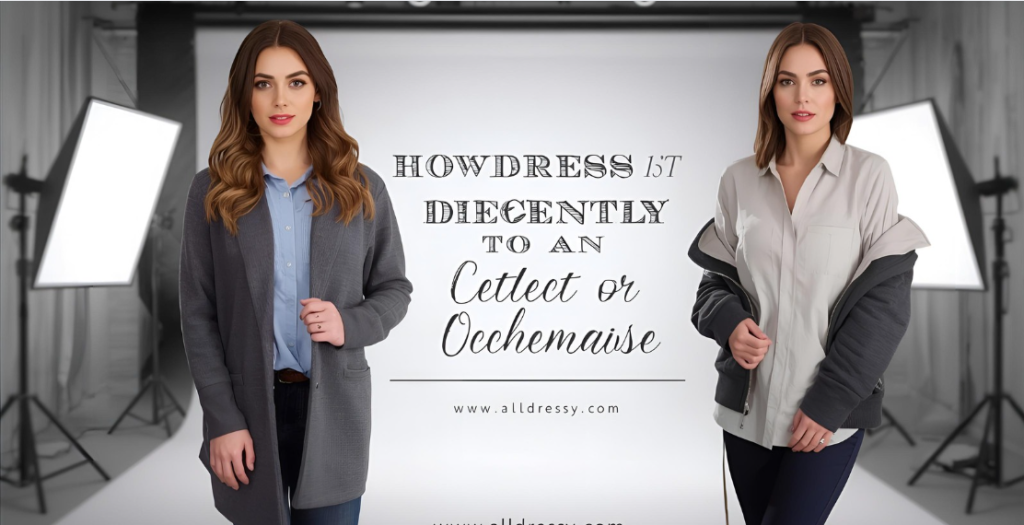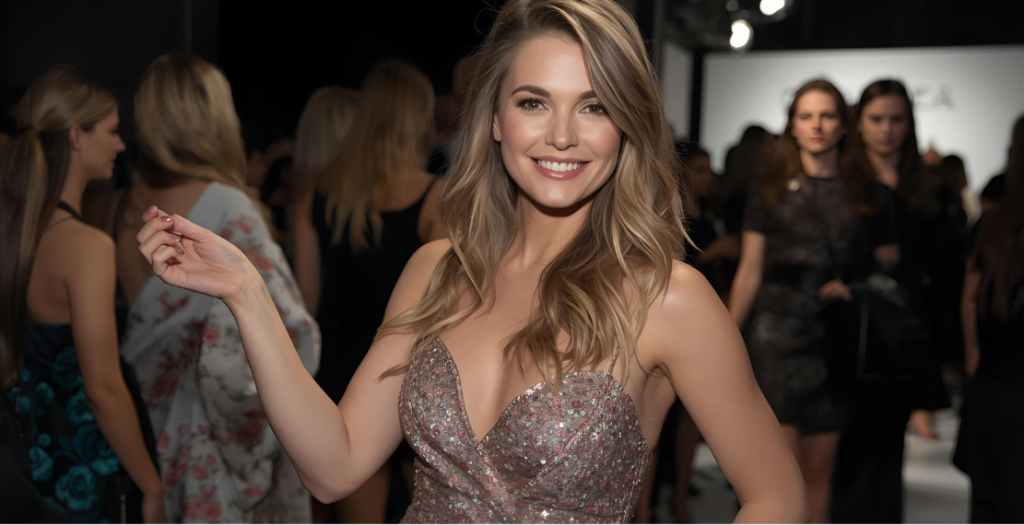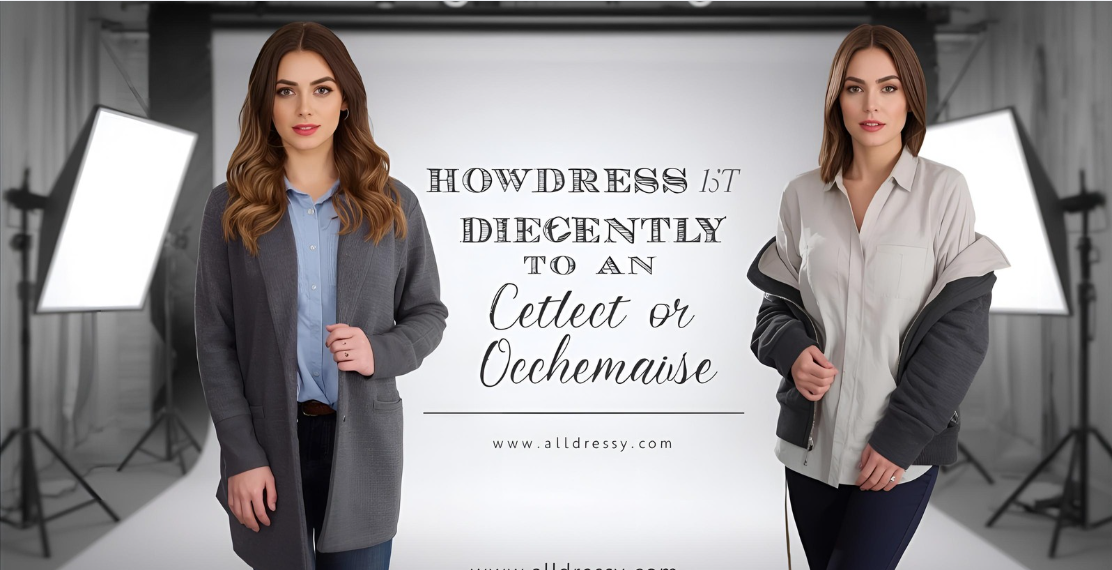Navigating the sartorial landscape of special events can be a source of significant anxiety. The question of how to dress decently to an occasion is about more than just avoiding a fashion faux pas; it’s a nuanced skill that balances respect for the event, personal comfort, and authentic self-expression. Dressing decently demonstrates social intelligence, showing that you understand the context and have made a conscious effort to honor it. Whether you’re staring at a wedding invitation with a cryptic dress code, preparing for a crucial job interview, or planning an outfit for a sophisticated dinner party, this comprehensive guide will provide you with a clear, actionable framework. We will move beyond generic advice to explore the psychology of occasion-wear, decode complex dress codes, and offer practical strategies to ensure you always step out the door feeling confident, appropriate, and impeccably dressed.
Why Mastering How to Dress Decently to an Occasion is a Critical Life Skill

Your outfit is a powerful non-verbal communicator. Before you even speak, your clothing sends a message about your understanding of the situation and your respect for the hosts and other attendees. Learning how to dress decently to an occasion is a form of social and professional currency that offers profound benefits:
- It Demonstrates Respect and Etiquette: Dressing appropriately shows the hosts and fellow guests that you value the event enough to put thought into your appearance. It signals that you understand and respect the social or cultural context.
- It Builds Unshakeable Confidence: There is a unique confidence that comes from knowing you are perfectly dressed for the event. It eliminates the self-consciousness of being over- or under-dressed, allowing you to fully engage and enjoy the moment.
- It Creates Positive and Lasting Impressions: In both professional and social settings, a decent, well-considered outfit contributes to a positive first impression. It can influence career opportunities, social connections, and how you are perceived by others.
- It Simplifies Decision-Making: Having a mental framework for decoding events and their corresponding dress codes eliminates the “I have nothing to wear” panic. It transforms a stressful task into a streamlined, almost intuitive process.
The Foundational Principle: Context is Everything

The core of knowing how to dress decently to an occasion lies in accurately assessing the context. A decent outfit for a beach wedding is fundamentally different from one for a corporate gala. Before you even open your closet, you must become a sartorial detective and ask key questions:
- What is the Explicit Dress Code? Start with the invitation. Terms like “Black Tie,” “Cocktail Attire,” or “Business Casual” are your primary guides.
- What is the Venue and Time of Day? A daytime garden party calls for lighter fabrics and colors (linen, cotton, florals), while an evening event at a luxury hotel demands darker, richer, and more formal fabrics (silk, velvet, satin).
- What is the Cultural or Religious Context? Attending a ceremony in a place of worship? Research modesty requirements, such as covered shoulders or hemlines. A traditional event may have specific color symbolism or attire expectations.
- Who are the Hosts and the Other Guests? Consider the demographics and style of the hosts and the likely attendee list. A party for colleagues will differ from a family reunion.
Decoding Common Dress Codes: A Practical Guide
Here is a detailed breakdown of common dress codes and how to interpret them decently and stylishly.
1. White Tie & Black Tie: The Pinnacle of Formality
These are the most formal dress codes you will encounter.
- White Tie: For ultra-formal evening events like state dinners or opera openings.
- For All: Floor-length evening gowns are mandatory. The most formal fabrics like silk, satin, or velvet are expected. Elbow-length gloves are traditional.
- Key Takeaway: Think old-world Hollywood glamour. This is not the time for short hemlines or casual fabrics.
- Black Tie: Common for formal weddings, galas, and fundraisers.
- For All: Floor-length gowns are standard, but a sophisticated cocktail dress may be acceptable if the invitation says “Black Tie Optional.” Elegant separates, like a beaded top with a silk skirt, can also work.
- Key Takeaway: Decorum is key. Opt for luxurious fabrics, refined jewelry, and elegant hairstyling.
2. Cocktail Attire: The Most Versatile Formal Code
This is a frequent dress code for evening weddings, holiday parties, and upscale birthday celebrations.
- What to Wear: A knee-length or tea-length dress is the classic choice. A sophisticated jumpsuit is a modern and perfectly acceptable alternative. Fabrics should be elevated—think lace, chiffon, shimmering knits, or high-quality crepe.
- How to Dress Decently: Avoid anything too short, too tight, or too casual. This is not the place for daytime sundresses or clubwear. Your outfit should feel celebratory and polished.
- Key Takeaway: “Little Black Dress” is a cliché for a reason. It’s a foolproof foundation that can be accessorized for any cocktail event.
3. Business Formal & Business Casual: Navigating the Professional World
Understanding the distinction here is crucial for career success.
- Business Formal: For interviews, important client meetings, and conservative corporate environments.
- What to Wear: A matching suit (trouser or skirt) with a conservative blouse or shell. A tailored, knee-length sheath dress with a blazer is also appropriate.
- Key Takeaway: Prioritize structure, neutral colors (navy, black, grey), and minimal, professional accessories.
- Business Casual: For everyday office wear in less rigid environments.
- What to Wear: This is where you have more flexibility. Tailored trousers, a smart skirt, a blouse or a high-quality knit top, and a structured blazer or cardigan.
- Key Takeaway: The “casual” refers to the absence of a full suit, not a decline in polish. Denim, t-shirts, and open-toed sandals are typically not considered decent business casual attire.
4. Semi-Formal & Dressy Casual: The Ambiguous Middle Ground
These codes are often the most confusing because they live in the grey area.
- Semi-Formal/Daytime Wedding: Less formal than cocktail attire.
- What to Wear: A knee-length or midi dress in a daytime-appropriate fabric (e.g., a floral print, a linen blend). A dressy skirt and top, or tailored trousers with an elegant blouse, are excellent choices.
- Dressy Casual/Upscale Party: A step above everyday wear.
- What to Wear: Dark, well-fitting jeans without rips can be acceptable if paired with a sophisticated top (e.g., a silk camisole, a structured blouse) and elegant heels or loafers. A casual-style dress in a luxe fabric also works.
- Key Takeaway for Both: When in doubt, it is always more decent to be slightly overdressed than underdressed.
The Five Pillars of Dressing Decently for Any Occasion
Beyond the specific dress code, these five universal principles will guide you toward a consistently appropriate and polished look.
1. The Principle of Fit and Proportion
Clothes that fit you well are the non-negotiable foundation of a decent appearance.
- Actionable Tip: Invest in tailoring. Hemming trousers, taking in a dress, or adjusting sleeves is relatively inexpensive and makes any garment look custom-made and intentional.
2. The Principle of Fabric and Texture Appropriateness
The material of your clothing communicates as much as the style.
- Daytime/Outdoor: Linen, cotton, chambray, and light knits.
- Evening/Indoor: Silk, satin, velvet, lace, and high-quality synthetics.
- Professional: Wool, crepe, ponte knit, and structured cotton.
3. The Principle of Modesty and Coverage
This is not about prudishness, but about context-awareness.
- Guideline: A good rule is to choose one feature to highlight. If you wear a low neckline, opt for a longer hemline. If you wear a short skirt, choose a top with more coverage. This balanced approach is almost always perceived as more sophisticated and decent.
4. The Principle of Color Psychology and Pattern
Color sets the mood for your outfit.
- Formal Events: Dark, rich, or neutral colors (black, navy, emerald, burgundy) convey formality.
- Daytime/Celebratory Events: Pastels, brights, and playful patterns are more appropriate.
- Professional Events: Stick to a neutral base with a pop of color for personality.
5. The Principle of Cohesive Grooming and Accessories
The finishing touches complete the narrative of your outfit.
- Shoes and Bag: Ensure they match the formality of your outfit. Scuffed shoes or a beaten-up backpack can undermine an otherwise perfect ensemble.
- Jewelry: Choose pieces that complement, not overwhelm. For formal events, opt for more refined and classic styles.
- Grooming: Clean, styled hair, neat nails, and subtle makeup and fragrance demonstrate a high level of personal care that is essential to a decent overall presentation.
Building a Versatile Occasion-Wear Capsule Wardrobe
You don’t need a closet full of outfits for every possible event. A few strategic pieces can be mixed and matched to cover a wide range of dress codes.
The Core Pieces:
- The Little Black Dress (LBD): A knee-length, well-tailored dress in a luxe fabric like crepe or a heavy knit. It can be dressed up for cocktail events or down for dressy casual ones.
- A Tailored Blazer: In navy or black, this can instantly elevate a pair of trousers, a dress, or even dark jeans.
- Elegant Trousers: A pair of black, wide-leg or straight-leg trousers in a flowing fabric is incredibly versatile.
- A Sophisticated Jumpsuit: A well-fitting, elegant jumpsuit is a modern alternative to a dress and can be styled for multiple occasions.
- A Silk Blouse: This can be paired with trousers for business casual, with a skirt for semi-formal, or under a blazer for business formal.
- Two Pairs of Versatile Shoes: A pair of closed-toe pumps (nude or black) and a pair of elegant flats or loafers.
Navigating Specific Occasions: From Weddings to Interviews
- As a Wedding Guest: Never wear white or ivory. Avoid overly flashy outfits that could upstage the couple. For a religious ceremony, bring a pashmina or jacket to cover your shoulders.
- For a Job Interview: Always lean toward business formal, even if the office is casual. It shows you are serious and have made an effort. Ensure your clothes are wrinkle-free and your shoes are polished.
- For a Funeral or Memorial Service: Decency here means understated respect. Wear conservative, dark-colored clothing (black, navy, grey). Avoid bright colors, loud patterns, and revealing silhouettes.
Frequently Asked Questions (FAQs)
Q1: What is the one golden rule for dressing decently to an occasion?
When in doubt, it is always better to be slightly overdressed than underdressed. Being overdressed shows effort and respect, while being underdressed can appear careless or disrespectful.
Q2: I’m on a tight budget. How can I manage to dress for all these different events?
Focus on building the capsule wardrobe outlined above with affordable, well-fitting pieces. Renting special occasion wear is an excellent and cost-effective option for formal events. Thrift stores and consignment shops can also be treasure troves for high-quality, classic items.
Q3: How can I incorporate my personal style while still adhering to a strict dress code?
Use accessories, color, and silhouette to express yourself. A “Black Tie” dress code requires a floor-length gown, but you can choose one in a color that suits you or with a unique neckline. For a business formal outfit, you can wear a boldly colored blouse under a neutral suit. The foundation follows the rules; the details express you.
Q4: Is it inappropriate to ask the host for clarification on the dress code?
It is perfectly acceptable, and even encouraged, to ask for clarification if you are unsure. A simple message like, “I’m so looking forward to your party! I wanted to check on the dress code to make sure I get it right,” is polite and shows you care.
Q5: What should I do if I arrive at an event and realize I am significantly over- or under-dressed?
Don’t panic or let it ruin your evening. If you’re underdressed, stand tall and be confident—your attitude can outweigh your outfit. If you’re overdressed, you can subtly “dress down” by removing a blazer, a tie, or statement jewelry. In either case, focus on being a wonderful guest and engaging with others.
Q6: How important are shoes and a bag in the overall assessment of an outfit?
Extremely important. They are key indicators of how much thought you put into your ensemble. Wearing casual sneakers with a formal dress or a daytime tote with an evening gown can undermine the entire look. Ensure your footwear and bag align with the formality of your clothing.
Conclusion: Your Blueprint for Confident and Decent Occasion-Wear
Mastering how to dress decently to an occasion is an empowering skill that blends social awareness with personal style. It is a learnable art that removes the stress from getting dressed and replaces it with confidence. By understanding the context, decoding the dress code, and adhering to the universal principles of fit, fabric, and moderation, you can navigate any event with poise.
Let this guide be your blueprint. Start by auditing your wardrobe for those versatile core pieces. The next time an invitation arrives, take a moment to analyze it using the framework provided. Remember, the goal is not to blend into the background, but to present the best, most respectful, and most authentic version of yourself. Your clothing is your ally in making a positive impact, and with this knowledge, you are equipped to make every entrance a confident one.

